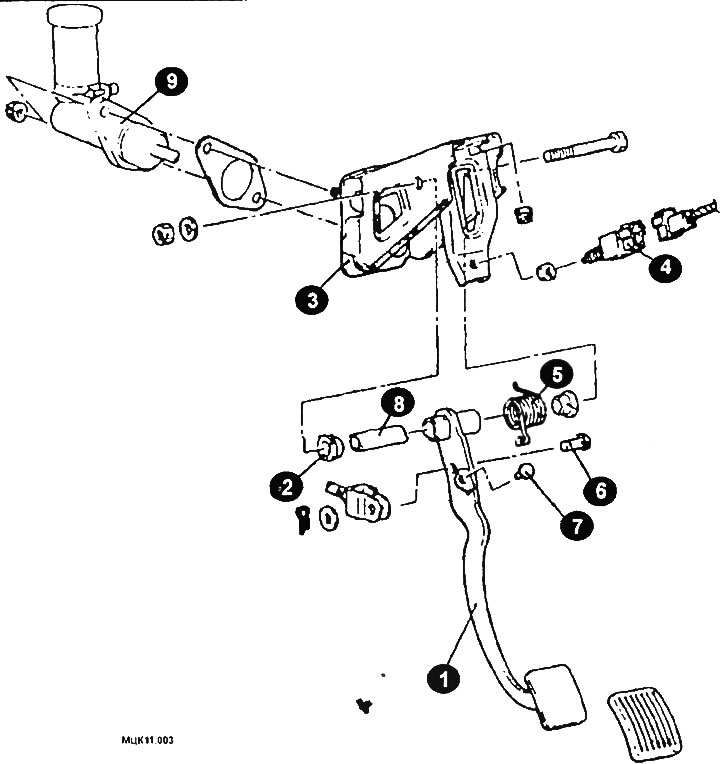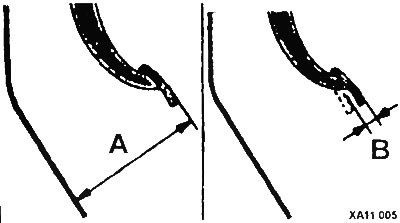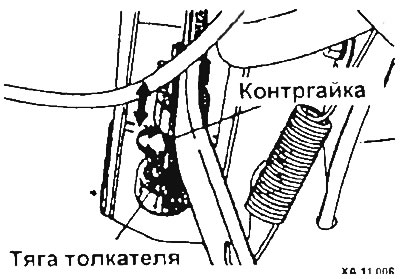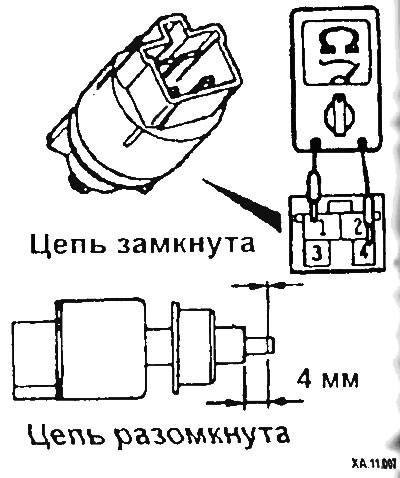
Clutch pedal fittings
1 - clutch pedal; 2 - bushing; 3 - bracket; 4 - adjusting bolt or clutch release sensor; 5 - spring; 6 - pin; 7 - emphasis; 8 - tube; 9 - clutch master cylinder.
If you have difficulty disengaging and engaging the clutch, check the height and free travel of the clutch pedal.
Measure the distance from the rubber pedal pad to the mat. Nominal dimension A: 162-165 mm.
By pressing the clutch pedal with your finger until you feel resistance, measure the free play of the pedal.

Required value B: 1-3 mm.
If this clearance is out of tolerance, the following adjustment must be made:
Unscrew the locknut, adjust the height of the clutch pedal with the adjusting bolt. Tighten the locknut to approx. 15 Nm. If the clutch pedal height is below the required value, unscrew the bolt and turn the push rod so that adjustment can be made. After adjustment, tighten the set bolt until the pedal stops and tighten the lock nut.

Rotate the push rod to adjust the clutch pedal free play at the fork head pin. Then tighten the tie rod locknut to approx. 15 Nm.
Several times, pressing the clutch pedal, check the distance from the pedal to the floor with the clutch depressed. The required value is 70 mm or more. The clutch pedal free play should be between 6 and 13 mm.
If the pedal height or free play is out of tolerance, the clutch or master cylinder is faulty, or there is air in the hydraulic system.
Clutch release sensor - check
Connect an ohmmeter to the clutch release sensor leads.

The clutch release sensor is in good condition if, when the sensor rod is extended by less than 4 mm from the end of the sensor housing, the circuit is open, and when the rod is extended by more than 4 mm, the circuit is closed.
